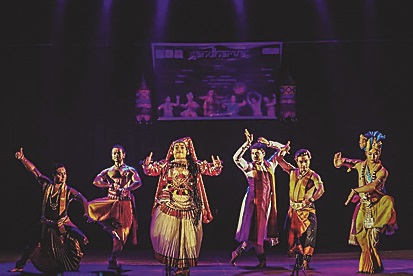Dance history in India and the spaces in which the forms originated and evolved have mandated that the practice and presentation of most of the classical forms are the exclusive preserve of women. It is a field still largely populated by women and the presence of male dancers (except in Kathakali) is somewhat marginal. In the context of this imbalance, a programme such as Gandharva — The Male Dancers’ Summit, featuring practitioners of the five classical forms of India, at the Abanmahal auditorium recently provided an interesting platform for the exploration of classical dance in the male body.
Themed on Hari-Hara, the two predominant male notables in the Indian pantheon, the evening had pieces that delved into the Vishnu and Shiva mythology. Bharatnatyam was represented by Nilesh Singha, Odissi by Krishnendu Saha, Manipuri by Manju Elengbum, Kathakali by Pralay Sarkar, Bharatnatyam by Arkadev Bhattacharya and Kathak by Souvik Chakravorty. The dancers, with traditional compositions that drew upon identities based on gender exploring masculine power and grace, made a strong statement.

